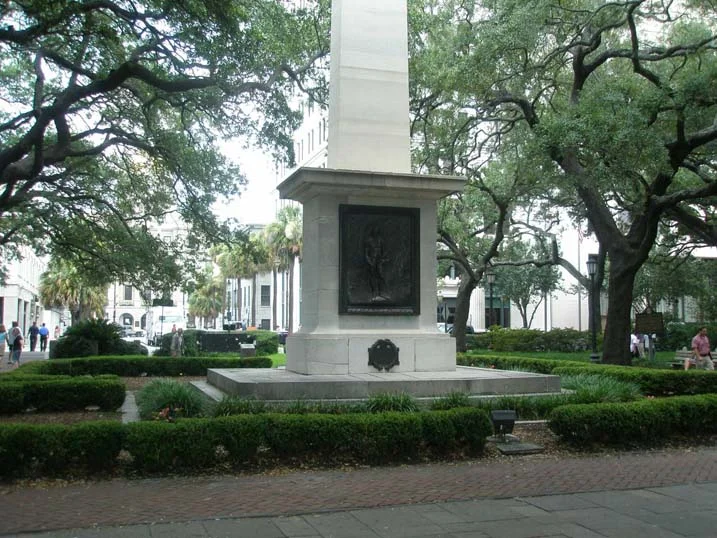What Makes a Good Park? Part 4: Time to be Bold
Since Malcom Gladwell penned “The Tipping Point” in 2000, pundits, writers and journalists of all stripes have been obsessed with calling the next “tipping point” in their own particular field. It’s no different in urban planning. For over a decade, New Urbanists and Smart Growth advocates have been claiming we’re at or past the tipping point where the public fully embraces walkable communities. As someone who regularly works and visits communities far from the coasts, I’ve been a skeptic. Yes, there’s been a remarkable change in awareness and attitudes, but I’ve often felt that in reality we’ve only been reaching a small percentage of the broader public. But lately, my mind has been changing. The more I travel around and see change first-hand, as well as read up on what is going on in our communities, the more it’s clear that there is in fact a tipping point coming. None of us can ever say exactly when these things happen, but it feels likely that within the next ten years (and perhaps sooner) we’ll see a remarkable shift away from the car culture that has been our national obsession for over 80 years. And, this is something that won’t be obvious in places we expect, such as the largest metropolitan areas in the country. We’ll see it across the spectrum – in the mid-size cities, small towns and rural areas that make up the vast geography of the continent.
The question is – is your community ready for it?
By no means am I saying we are abandoning cars. The option of personal mobility with a car is something that will be with us as long as we have fuel to drive. But what is changing is the wholesale obsession that every person owning a car, and using it for nearly every trip in his or her day is a component of the good life. People are realizing that we like to walk. We like to bike. We enjoy a lifestyle that doesn’t make us slaves to gasoline, parking and traffic. We crave that freedom that only can be had by truly having options., including options on how to transport ourselves around.
So what is the relationship between these changes and this series on public space? Simply, public space is the most critical element to making our cities walkable and desirable. As people rediscover urbanity, having quality public space in the right place will be essential to the good life going forward. Parts 1, 2 and 3 of this series outlined some theories and approaches to public space. This last part outlines a way forward.
Of course there’s never just one way to achieve success. But in the typical American context, our cities would do well to stick to these initiatives in particular:
- Build/rebuild parks, plazas and squares in the places where they are most needed
- Complete a true network of bicycle infrastructure, including cycle tracks, bike boulevards, bike sharing and bike parking
- Remake our existing streets so that they balance the needs of all users – pedestrians, bikes, transit and cars
- Remove high-speed roadways that cut through cities, and knit back together neighborhoods that were mistakenly separated
- Encourage bottom-up incremental efforts from people to improve their own blocks




In a broader sense, these examples outline a 21st century approach to public space in our cities. The approach acknowledges that we’ve done some things well and others not so well. We have some excellent legacies from the past, but a great deal of those remnants don’t serve us well, or were designed with something else in mind. For our cities to succeed long-term, we must put people and sociability at the forefront of our decision-making. It’s not good enough to have some green on a map, or to build a bike lane or two.
While some of these efforts would take years to materialize, others can begin immediately. We can take advantage of the linear features of the City Beautiful plans to create exceptional bike boulevards, slow down car traffic, and encourage mixed uses along them. We could even consider leasing or selling some of the great amount of excess parkland that is not usable or not needed. It sounds like heresy, I know, but cities are not museums for park design – they are places for people to use.
Cities have other techniques available to them, especially when it comes to the task of creating public space in the right place. In some cases, this will involve the outright purchasing of property for public use, and demolition/rebuilding. The Redfields to Greenfields proposal and the City Parks Alliance suggest using the current real estate depression as a means to create long-term land banks. That’s certainly one approach, and could be especially useful to add more formal, less programmed neighborhood parks where they are needed. Another is to use value capture mechanisms (more on that in a future post) in order to fund necessary public improvements, such as squares or plazas or more commercialized areas.
All of these are worthy of exploration. Whether they all work or only some, we need to put the spotlight back on usable public space for people. And, we need to do it with a sense of urgency. Today’s combination of rising demand, deflated real estate and low interest rates will not last for long. The time to be bold is now, to prepare our cities for the next hundred years.
If you got value from this post, please consider the following:
- Sign up for my email list
- Like The Messy City Facebook Page
- Follow me on Twitter
- Invite or refer me to come speak
- Check out my urban design services page
- Tell a friend or colleague about this site




